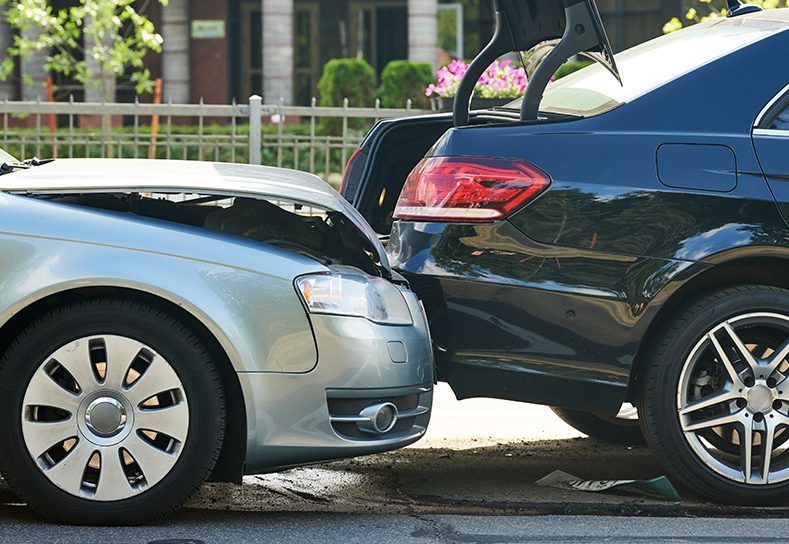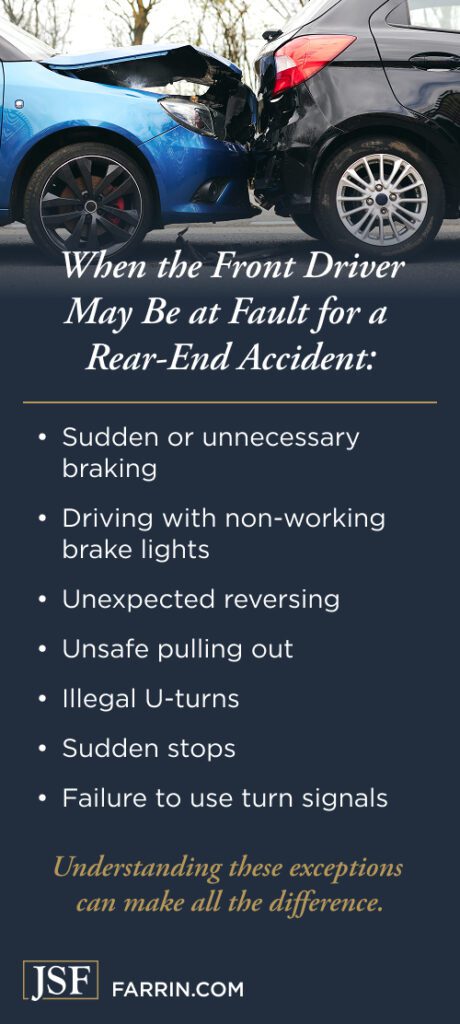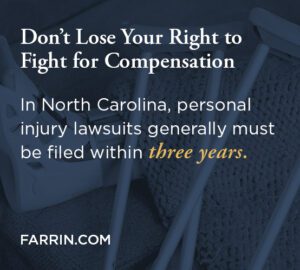The moments after a rear-end collision are often jarring and disorienting. In most rear-end accidents in North Carolina, the driver of the rear car is generally presumed to be at fault. However, this is not a hard and fast rule, and there are several important exceptions where the driver of the front car may be held responsible. As a personal injury attorney at a firm that has been named a “Best Law Firm” by Best Lawyers for 10 consecutive years (2016-2025), I have handled many rear-end accident cases and understand these nuances.⁴
I help my clients figure out if they have the right to bring a claim for their injuries. In this article, I’ll analyze the legal question of who is at fault in a rear-end accident in North Carolina, review the presumption of fault in North Carolina, explore the common situations where the lead driver might be liable, and discuss the types of evidence needed to try to prove your case.
Key Takeaways – Who Is at Fault in a Rear-End Accident in North Carolina
- North Carolina law creates a “rebuttable presumption” that the rear driver is at fault in rear-end collisions due to the duty to maintain safe following distance.
- The front driver may be liable in specific situations including brake checking, non-functioning brake lights, reversing unexpectedly, or pulling out unsafely.
- Multi-car accidents require careful analysis to determine the sequence of impacts and each driver’s contribution to the collision.
- Critical evidence can include police reports, photos, witness statements, dash cam footage, and vehicle event data recorder information.
- North Carolina’s contributory negligence rule makes fault determination especially important as any contribution to the accident could bar recovery.
What Is the “Rebuttable Presumption” in North Carolina Law?

This creates what is known as a “rebuttable presumption.” Understanding this legal concept is crucial for anyone involved in a rear-end collision.
The presumption means two important things:
- Presumption: The starting assumption is that the rear driver breached their duty by following too closely or not paying attention, causing the crash.
- Rebuttable: This assumption might be challenged and overturned with convincing evidence that shows the lead driver was actually the one whose negligence caused the collision.
This rebuttable presumption places the initial burden on the rear driver to show they weren’t negligent. However, with proper evidence, this presumption might be overcome, shifting fault to the front driver.
When the Front Driver May Be At Fault: Common Exceptions
While the rear driver is often at fault, many accidents are not that simple. As an experienced attorney, I know to look for any evidence that the lead driver’s actions created a sudden and unavoidable hazard. Here are some common exceptions to the general rule.
Sudden and Unnecessary Braking, or “Brake Checking”
If a driver intentionally and aggressively slams on their brakes for no reason — often out of road rage — they might be held liable for causing the collision. This is not a reasonable or safe driving maneuver. Proving this often requires witness testimony or dash cam footage, as it is otherwise difficult to distinguish from a legitimate sudden stop.
Driving With Defective or Non-Functioning Brake Lights
Every driver has a duty to maintain their vehicle in safe working order. If the lead car’s brake lights or taillights are burnt out or not functioning, the rear driver may have no visual warning that the car in front of them is slowing down or stopping. In this situation, the lead driver’s negligence in failing to maintain their vehicle might be a primary cause of the crash.
Reversing Unexpectedly
An often clear-cut case of the front driver’s fault is when they put their car in reverse and back into the vehicle behind them. This might happen in parking lots, at stoplights, or in stop-and-go traffic. The rear driver likely has no opportunity to avoid this type of collision.
Pulling Out Suddenly and Unsafely
If a driver pulls out from a side street, parking lot, or driveway directly into the path of oncoming traffic without enough space, they might be held liable for a resulting rear-end collision. When they fail to yield the right-of-way, the other driver may have no reasonable opportunity to stop safely.
Other Potential Scenarios
Additional situations where the front driver might bear responsibility include making an illegal U-turn, stopping suddenly in an active traffic lane without cause, or failing to use turn signals when changing lanes. Each case requires careful examination of the specific circumstances.
What About Multi-Car Pileups?
Rear-end accidents involving three or more cars might be especially complex when it comes to determining fault. In a typical
However, fault might be shared among multiple drivers. Consider these common scenarios:
- A middle driver might have been following too closely and hit the car in front of them before being struck from behind
- A driver may have caused an initial accident, and a second, separate rear-end collision may happen moments later
Untangling these events requires careful accident reconstruction to determine the sequence of impacts and the actions of each driver involved. Some insurance companies may try to oversimplify these situations, which is why having skilled legal representation is crucial.
How Is Fault Proven in a Rear-End Collision?
Regardless of who may have been at fault, a successful claim depends on strong evidence. The moments after a crash can be critical for gathering information that might protect your rights.
Proving fault often depends on critical evidence, such as:
The Official Police Report

Photos and Videos

Witness Statements

Dash Cam and Traffic Camera Footage

Vehicle “Black Box” Data

Physical Evidence

The Impact of North Carolina’s Contributory Negligence Rule
North Carolina follows a harsh contributory negligence rule that might bar you from recovery if you contributed even slightly to the accident. This makes proving fault especially critical in rear-end collision cases. Even if the other driver was 99% at fault, any contribution on your part might eliminate your opportunity to recover needed compensation.
This rule makes it essential to work with an attorney who understands how to build a case to try to demonstrate the other driver’s sole responsibility for the collision. Insurance adjusters know this rule well and some may try to find any small action they can use to deny your claim entirely, no matter how badly you may be hurt.
Common Injuries in Rear-End Collisions
Rear-end accidents often cause serious injuries due to the sudden, unexpected impact. Unfortunately, I’ve seen clients suffer from various injuries that significantly impact their lives.
Common injuries include:
- Whiplash and other soft tissue injuries that might cause chronic pain
- Traumatic brain injuries from the head snapping forward and back
- Spinal injuries including herniated discs and compression fractures
- Broken bones, particularly in the face, hands, and arms
- Internal injuries from the force of seatbelts during impact
These injuries might require extensive medical treatment and result in significant time away from work. It’s incredibly important to understand the full extent of your injuries so that you can seek all the compensation you may be owed.





